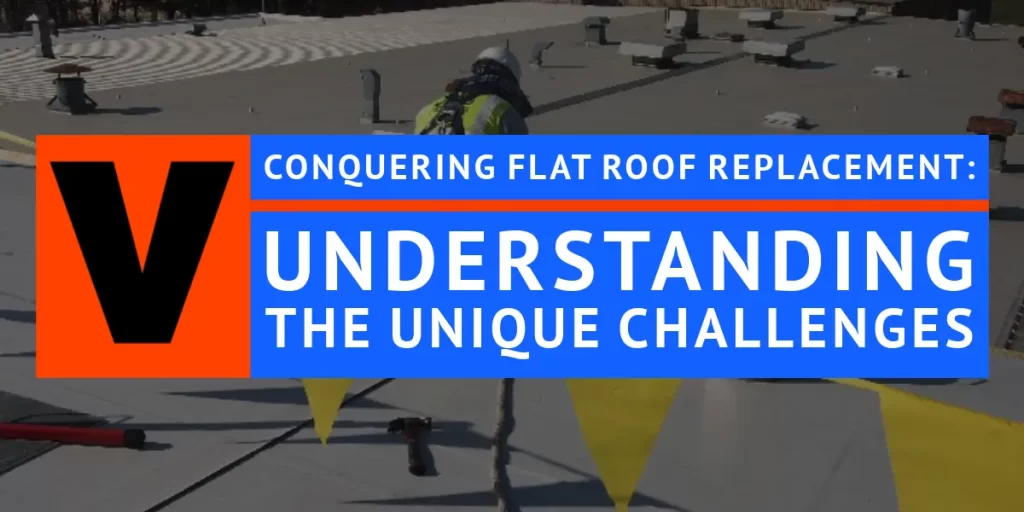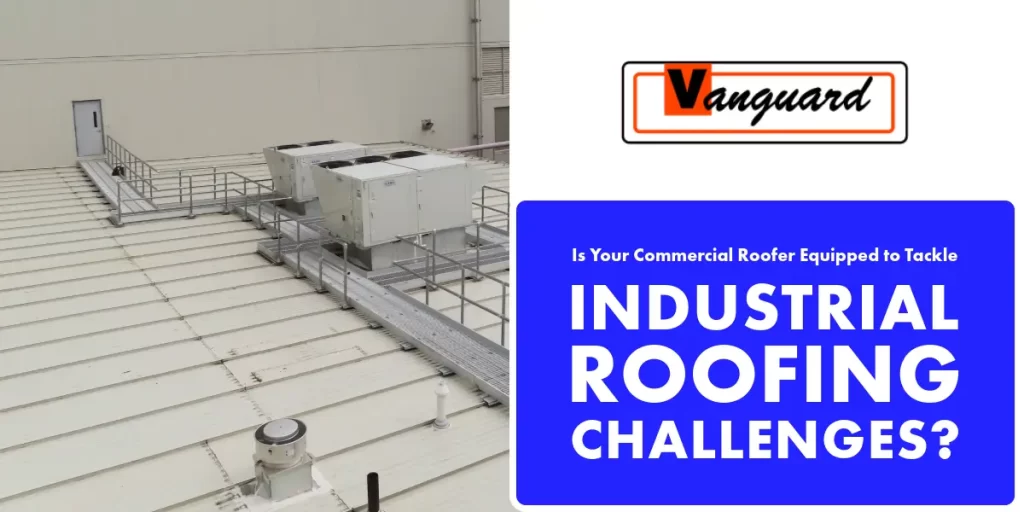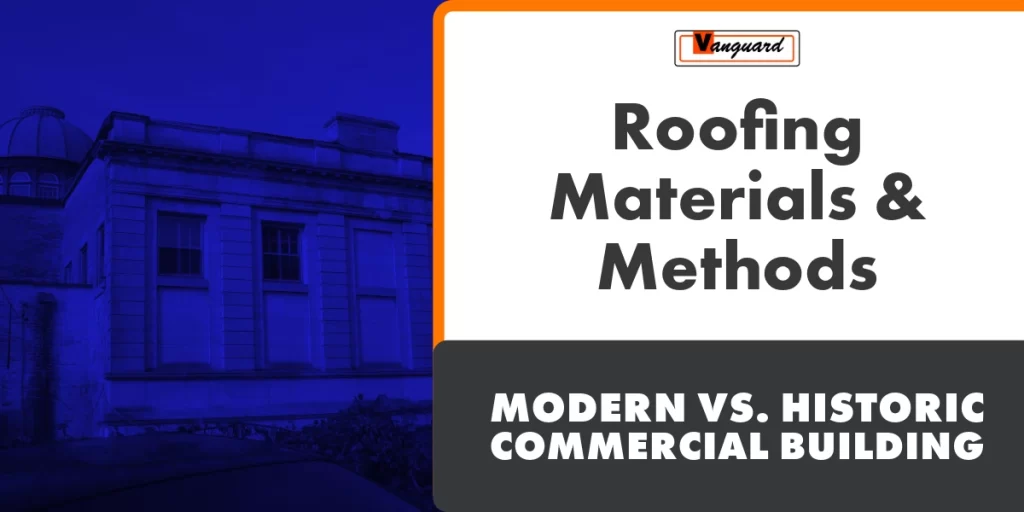Do you own or operate a commercial building? Are you the key decision maker for the property? Is that leaky roof keeping you up at night? Have you been told “one too many times” that the roof needs addressing “once and for all?” For businesses, a detailed evaluation is necessary to know what to do with a failing roof. Ideally, you first would involve a knowledgeable roofing professional to inspect your roofing system thoroughly. The risk of business disruption or loss is too significant to ignore. Repairs, restoration, or even a new roof coating may remedy the problem, at least temporarily. In other cases, a flat roof replacement may be the long-term solution.
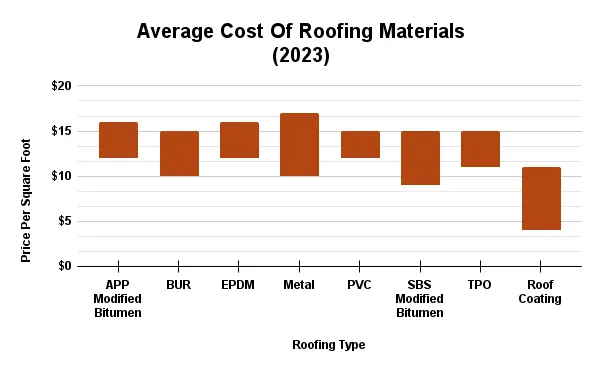
11 Challenges Of Commercial Flat Roof Replacement
You are not alone in this boat if you own or manage a commercial building with a flat roof. Consider the following issues that arise when evaluating the condition of your roof.
#1 – Addressing Thermal Shock (Including Excess Strain And Stress)
Flat roofs experience direct and immediate exposure to rapid temperature fluctuations. When temperatures change quickly, roofing materials expand and contract just as fast. Unfortunately, the roofing surface may suffer cracks and splits. A commercial roofer can minimize thermal shock by installing a proper underlayment and adequate insulation.
#2 – Deciphering Blistering And Bubbling
If your roof’s surface shows signs of blistering and bubbling, tread carefully. Moisture is becoming trapped between the layers of roofing material. Many possible explanations exist for this occurrence. The roof may have been improperly installed. The roofing system could lack sufficient ventilation. Whatever the cause, do not ignore this problem.
#3 – Decoding The Causes Behind Material And Surface Deterioration
Persistent exposure to outside elements – the sun’s damaging UV rays, wind, rain, hail, snow, ice, extreme heat, relentless humidity, drought-like conditions, and bone-chilling cold – adversely affects a roof’s health. At the surface level, the roof erodes, which becomes evident with discoloration and other imperfections. Is it time for a flat roof replacement?
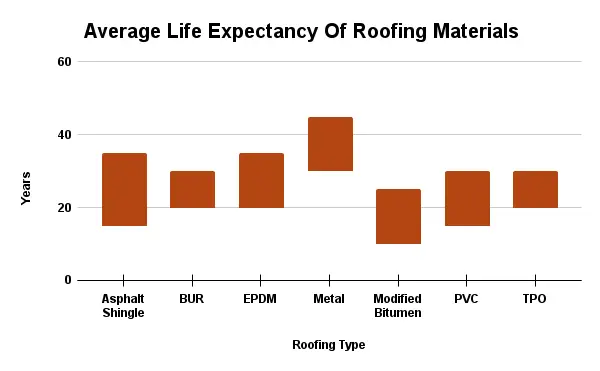
#4 – Figuring Out What Is Causing Ponding Water
Have you observed numerous pools of water forming on your flat roof following a rainstorm? Do you still see them there a few days later? That isn’t normal. In fact, ponding water signifies that your roof has poor drainage. Standing water will deteriorate the roofing materials, cause vegetation to develop and spread, and produce roof leaks.
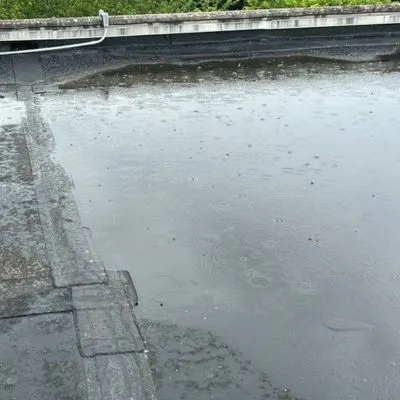
#5 – Finding The Root Cause Of A Leak
Typically, a leak means an issue exists somewhere in the roofing system. An untrained eye, or even a practiced eye, can miss the signs of what causes the leak. A knowledgeable and experienced roof inspector can decipher what is and is not contributing to the leak.
#6 – Identifying Flashing Issues Needing Resolution
Flashing is one of the most critical roofing components. Without quality flashing, the roof becomes much more susceptible to leaks and airflow inefficiencies, not to mention providing an entrance for uninvited creatures like bees, insects, birds, and rodents. An experienced inspector can pick up the signs of flashing degradation and defects requiring resolution.
#7 – Rectifying Issues Resulting From Negligent Roof Maintenance
Out of sight, out of mind is not the way to handle a commercial roof. Routine upkeep ensures problems and potential issues are addressed timely and efficiently. However, because your roof is not easily visible, and it takes intention to check its condition periodically.
#8 – Remediating Mold, Mildew, Or Other Vegetation Growth
The formation of mold, mildew, or algae inside or on a building can cause untold headaches and challenges. A bad case of mold will cost a business tens of thousands of dollars, and could require partial or total demolition.
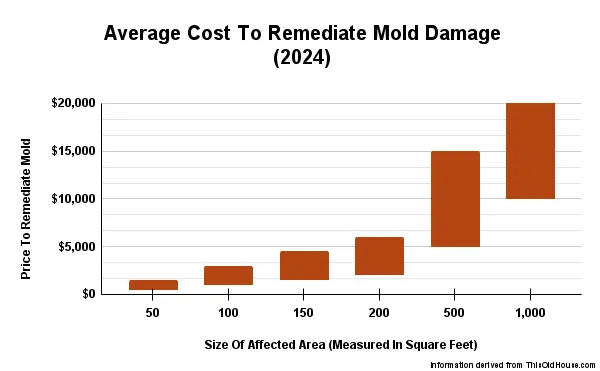
#9 – Removing Uninvited Guests: Pests
Each year, billions of dollars are spent on pest control services. Birds, rodents, and insects can invade your building. It may not all happen at once, but when these unwelcome visitors make a home in your structure, they can be almost impossible to remove. Most enter through holes in the roofing system. Sealing off entry points prevents or stops an infestation.
#10 – Resolving Substandard Installation Or Inadequate Repair Work
Not all roofing contractors are created equal. Some specialize in commercial roofing, while others are generalists. Quite a few come and go. Here, one day. Gone, the next. Unfortunately, shoddy workmanship can take time to identify. By then, it could be too late to fix “easily.”
#11 – Understanding Structural Integrity Issues
Like the human body, a commercial building ages. As the structure becomes older, it weakens. In some instances, the decay is gradual, sometimes almost imperceptible. In other cases, the aging process speeds up as time passes by. Without an expert roofing professional, it can be practically impossible to evaluate the structural integrity of a building accurately.
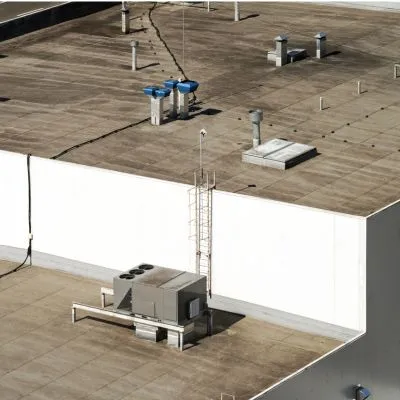
Moving Forward With A Commercial Flat Roof Replacement
Today’s commercial building owner or operator has more options than ever when it comes to roofing. Single-ply membranes come in various alternatives, with TPO (41%), EPDM (30%), and PVC (17%) dominating the market.
Modified bitumen (75%) and built-up roofing (25%) remain the standards for establishments pursuing asphalt shingle roofing. Whatever direction you choose, only work with a qualified commercial roofing company.
Hiring The Right Commercial Flat Roof Replacement Contractor
If you own or manage a commercial, industrial, or retail building in Southeastern New York, Northeastern New Jersey, Connecticut, or Massachusetts, trust Vanguard Roofing for all your roofing inspections, repairs, restorations, and flat roof replacements. We specialize in commercial roofing. It is what we do, and we do it better than the competition. To schedule an initial consultation to discuss your commercial roofing needs, contact us today.

